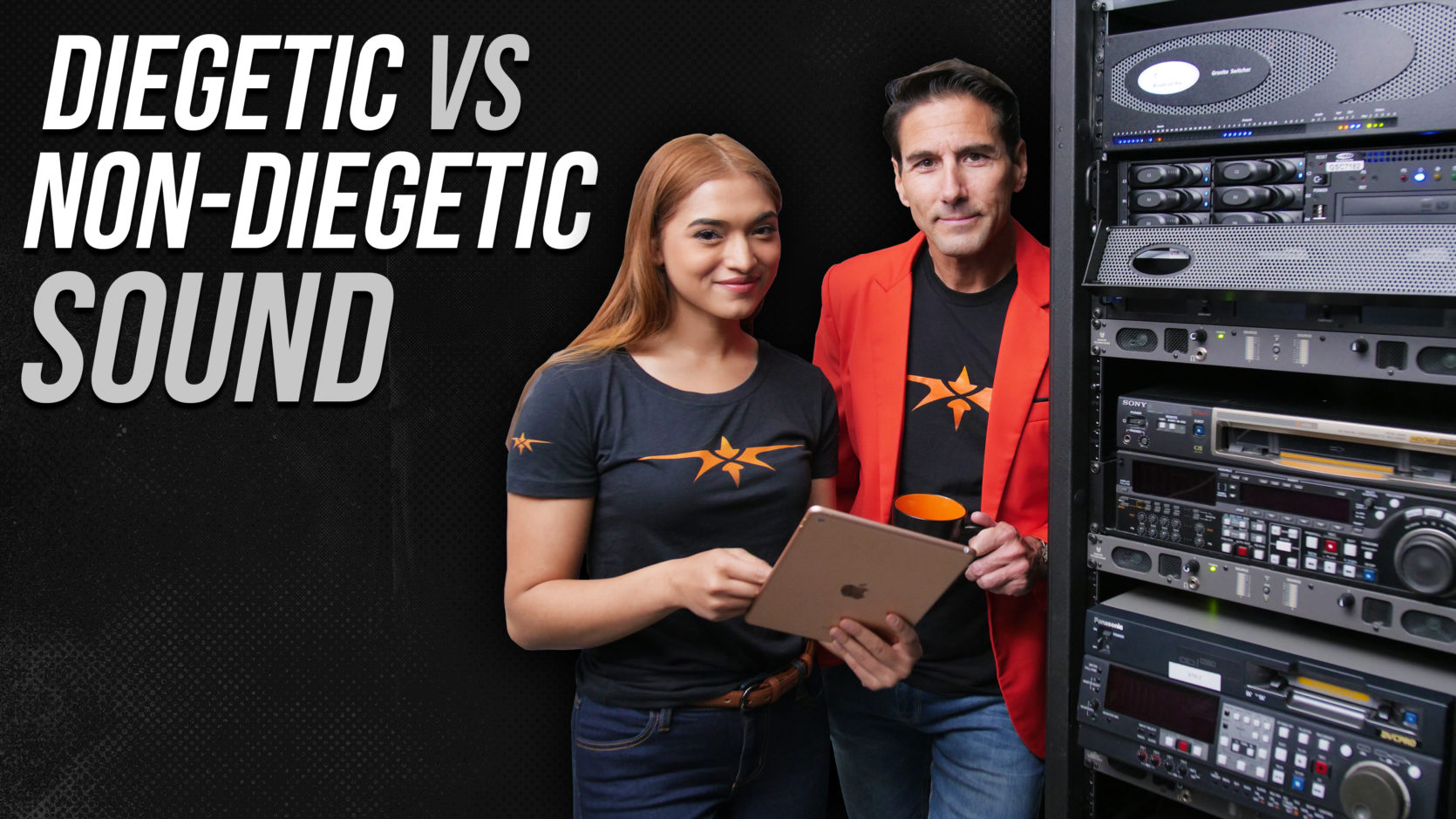
What is the Difference Between Diegetic Sound and Non-Diegetic Sound?
Onscreen And offscreen sound, termed diegetic sound and non-diegetic sound, is best explained in terms of the location in which the sound takes place on the video. Essentially, diegetic sound may take place on screen or off-screen. Whereas the non-diegetic sound is not taking place from within the frame, on the screen or off and is represented as coming from an outside source. We’re showing you the difference between diegetic sound and non-diegetic sound in film.

What is Diegetic Sound?
Diegetic sound is sound that originates within the film and a real sound which actually takes place during the scene and appears to have a place in the scene either on the screen or off.
For instance, in a scene with an individual driving a car, a horn honking would be considered a diegetic sound. Any sound that is real, or anything that has the potential to make sound within the frame is a diegetic sound.
Even a sound that comes from somewhere off the screen, but is a legitimate real sound that goes along with the purpose of the scene, is considered a diegetic sound.
For Example
Diegetic sounds, or the items producing the diegetic sound, may not be seen on the screen. For example, if you see a police officer driving his car to an emergency, and hear a siren, the sound is diegetic.
You don’t have to see the siren or the lights. But the sound is a legitimate sound with a natural source. And therefore, it is a diegetic noise or diegetic sound.

Diegetic Sound Examples
In the film world, diegetic sounds can have many forms.
Some basic examples of diegetic sounds include:
- The conversation of two or more characters on the screen.
- The conversation between characters off the screen in the background.
- Music being played in a restaurant.
- A piano being played in a home.
- Background music that is heard inside a bar.
- A street performer playing a guitar on the corner of a city block.
- Sound effects that simulate rain drops on a tin roof.
- Sound effects that simulate the squealing of wind outside a house.
Sound Effects
As you can tell from each of the examples of diegetic sounds listed above, they are all natural, real sounds that can and would be expected in various situations.
Even the sound effects, such as the simulated rain or wind, are considered diegetic sounds because rain and wind are legitimate, real sounds that actually would be expected in those situations.

What is Non-Diegetic Sound?
Non-diegetic sound is a sound that is from a source outside the primary scene or story. Non Diegetic sound has a source that is not visible on the screen and which has not been implied as being present on the screen.
There is no source on the screen for the non-diegetic sound which is clearly added in and are not understood to be commonly present or expected for the scene in which they are shown.
Non-diegetic sounds are often those of a voiceover, narrator, sound effect or music that is added after the fact to a scene as an addition that is understood as secondary to the footage.

Commentary Sound
Sometimes referred to as commentary sound, non-diegetic sound comes into the story from outside the story and is not a natural addition to the scene.
Non-diegetic sounds are typically added in during post-production. The most common form of non-diegetic sound is music that is added in to a scene following the shoot and which does not appear to be a natural element for the scene.
For instance, music that is playing as a scene transitions but not as a secondary accompaniment to the scene in which it is naturally occurring would be non-diegetic.
Likewise, music that is playing in a scene and appears to be coming from a car radio or some other source present to the scene would be considered diegetic.
*As an Amazon Associate we earn from qualifying purchases. We receive commissions for purchases made through links in this post.
Non-Diegetic Sound Examples
Non-diegetic sound examples can take many forms and often include character narration, soundtrack or music overlays, or sound effects that are not present in the film-world or which do not appear naturally from the real world.
For example:
- Music that is clearly not part of the natural scene such as that played over a scene after the fact would be non-diegetic. Such as the sound of drumming professional musicians, in a place where it isn’t possible for them to play. This music is used to deliver dramatism to the audience whereas a melancholy piano is used to invoke emotion in the audience.
- Narration that takes place through a scene for the sole purpose of helping the audience and with no purpose of guiding anyone from the actual story or in no way speaking to anyone in the story is considered non-diegetic.
- Various special effects sounds that are not expected in “real life,” such as the sound of bowling pins crashing as a table breaks or the sound of synthesized string instruments when an act is performed by a character on set would be non-diegetic sounds.
In Summary
The use of both diegetic sound and non-diegetic sound can be used to define the worlds that filmmakers create when producing video content.
Now that you know the difference between diegetic sound and non-diegetic sound, what kinds of sounds will you use in your next film production? Need help bringing your creative vision to life? Contact Beverly Boy Productions today to get started!




